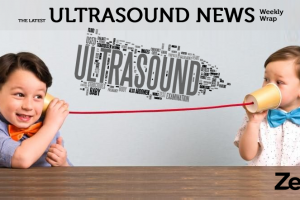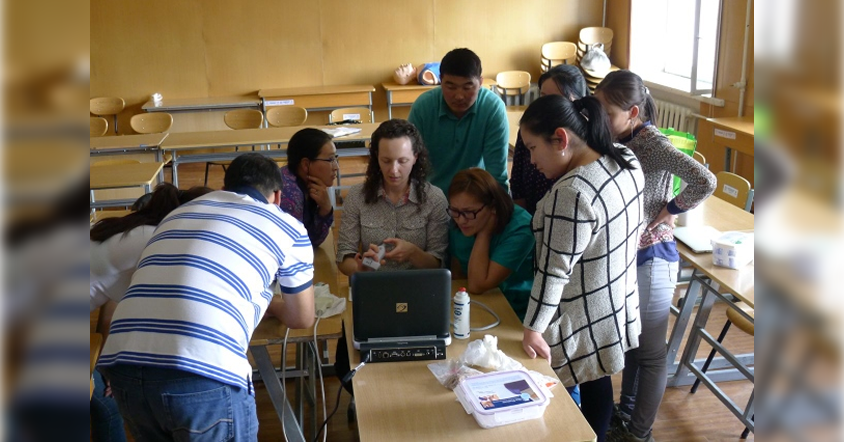
Steppe-ing out in Mongolia: Why we do what we do
Taking ultrasound to Mongolia
Our intrepid ultrasound educator Ingrid Yuile took her training skills to the steppes of Mongolia and found a country of beauty and complexity. This is her story…
The mission
In June 2015, I set off with 8 intrepid emergency physicians to teach emergency medicine to Mongolian doctors across a range disciplines. A strong relationship between Australian and Mongolian anaesthetists has been forged since 2001 when Dr David Pesod first represented Australia at an anaesthesia conference.
Over the years, Australian volunteers have delivered quality training in obstetrics and gynaecology, midwivery, paediatrics, surgery and emergency medicine. To my knowledge, this is the first year a sonographer has been involved to specifically teach point of care ultrasound techniques.
After months of preparing talks, organising equipment, getting visas and reading countless emails, the group was set to go. I was thrilled to be part of an Initial Emergency Care (IEC) team along with FACEM doctors Simon Smith, Wolfgang Merl, Mark Putland, Robyn Parker, Luigi Marino, Ben Delaney, Rob Melvin and Peter Jordan. We were invited by the Mongolian Society of Anesthesiologists to teach emergency care.
About Mongolia
Mongolia is a fascinating place.
Landlocked with Russia at it’s northern border and China on the east, south and west. With a tumultuous history from Ghengis Khan to the collapse of the Soviet Union, Mongolia has seen its fair share of conflicts.
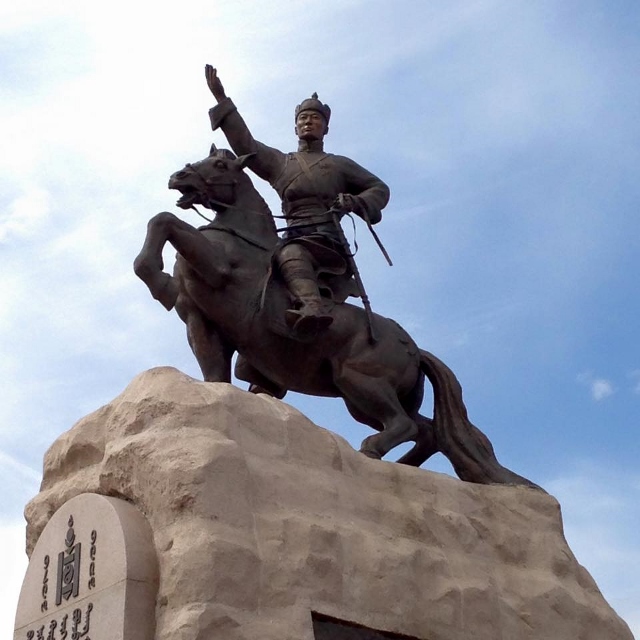
Genghis Khan
It is the most sparsely populated country in the world with a population of 3 million people, approximately 40% of which live in the capital city, Ulaanbaatar (UB). Many people living in rural areas maintain their traditional nomadic or semi-nomadic lifestyle and while the economy is still reliant on agriculture and herding, the last 15 years has seen a boom in the mining industry.

Ulaanbaatar
Mongolian health services
Mongolia is divided into 21 provinces (aimags) which are divided into 329 districts (soums). Health services are delivered at national, aimag and soum hospitals. As a group, we flew into UB before splitting into 2 teams. One set off for Dundgovi aimag but my team were destined for Khovd aimag, in the far west of the country. As we had 2 days in the capital before flying to Khovd, we were kindly given a tour of UB’s brand new Number 1 Hospital that had opened only 6 weeks earlier. This emergency department would see between 60-100 patients a day. It was great to see their triage area, emergency room (ER) complete with hand-held ultrasound machine and the Intensive Care Unit (ICU) with portable ultrasound machines.
As impressive as their services were, there is still much room for improvement. For example, vitamin C in the ER to treat sepsis (a hangover from old Russian medical training) and open doors and windows in the ICU. Imagine placing a femoral line next to an open door leading to outside! Progress is difficult for the younger doctors working hard to implement evidence based medical practice as they come up against resistance from older, more senior doctors set firmly in their ways. Emergency medicine is in its infancy in Mongolia with the majority of critical care being provided by anaesthetists. However, a 2 year residency program training 12 doctors in UB has begun, so change is surely afoot!
Nightlife in UB
After our hospital visit those of us still in UB set out to experience the city. Risking our life every time we crossed the street we made our way to the Buddhist Gandantegchinlen Monastery; the State Department Store to pick up a few souvenirs; and Grand Chinggis Khaan Square complete with statues of its namesake. In the evening we caught the daily cultural show to experience the wonders of Mongolian throat singing, energetic dancing with a clear Cossack influence, an array of traditional instruments and a wince-worthy performance by a stunning contortionist.
With an early start the next day we met our two translators, anaesthetists Tsolmon Begzjav and Enkh-Amgalan Dorjbal, and headed to Chinggis Khaan International Airport. After three hours on a bumpy propeller plane with an unflushable toilet, we were in Khovd.
Khovd
Khovd is a province and home to 84,000 people. 30,000 live in Khovd city and the others are spread around the 18 districts. Located 1395 metres above sea level, which is on par with some of Falls Creek snow resort, Khovd has a cold desert climate with apparently minimal annual rainfall. However, it rained every day we were there. Fortunately this cleared each afternoon and as the sun didn’t set until after 10pm we always had hours of daylight to enjoy. The locals were grateful we bought rain all the way from Melbourne with us and said that if they ‘don’t benefit from the training, at least they’ll benefit from the raining’!
Khovd hospital
Khovd aimag hospital is considered a ‘Level 2+’ hospital and has impressive facilities including triage, 2 bed ER, 2 bed ICU, haemodialysis unit, blood bank, pathology, XR, CT and ultrasound.
We had a jam-packed 3 day program of lectures and workshops to deliver to a group of 24 medical professionals comprising anaesthetists, primary care physicians, nurses, a radiologist and a sonographer. It was an interesting experience delivering talks through an interpreter and also adjusting to Mongolian-time, which resembled ‘Fiji-time’.
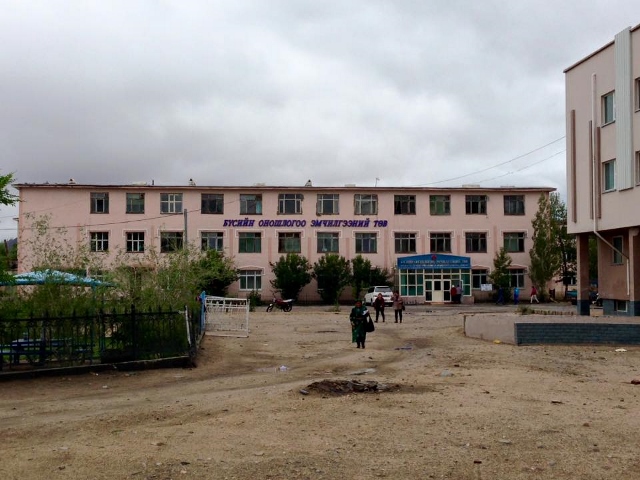
Khovd hospital
The doctors in my team covered a wide range of emergency medicine topics and I taught Extended Focused Assessment with Sonography in Trauma (eFAST) and needle guidance techniques. I am extremely grateful for the generous support of SonoSite for lending me a portable ‘Edge’ machine. Having this machine for the teaching sessions was invaluable. It would have been impossible to teach on the antiquated machine from the hospital with only a curved transducer and depth, focus, gain and cineloop all not functioning.

Fortunately, the benefits of point of care ultrasound are becoming widely accepted and updated machines are slowly making their way (usually via donations) into the aimags. All they need now is more training and a lot of practice. Portable systems can have a great impact in the acute setting where rapid diagnosis expedites patient management potentially improving prognosis. Once the needle guidance technique is mastered it can be used to assist in a variety of interventions improving accuracy and safety of invasive procedures.
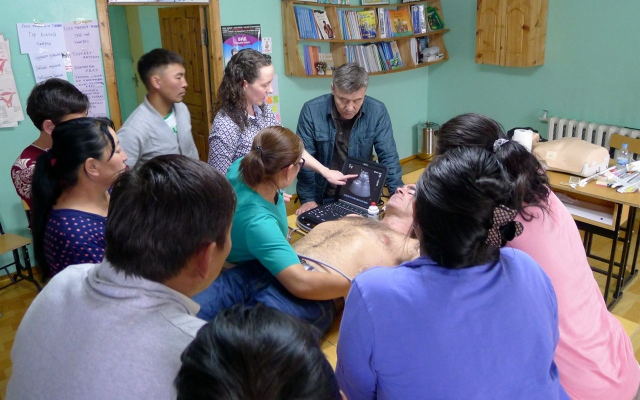
Khovd nightlife
My IEC team were welcomed warmly by the local doctors and chauffeured around town in an old Russian mini-van that ensured you noted every nuance of the potholed Khovd roads. We were treated to dinners in the on-call room at the hospital, karaoke near our hotel, and vodka and Chinggis beer at every occasion. It was lovely to be taken to the scenic areas around town from where we could appreciate the isolation of this aimag in its flat arid surroundings with hills just on the horizon.
One evening we were taken for a 1.5 hour 4WD into the hills and had dinner with the aimag ambulance driver’s parents. They live a traditional nomadic life herding sheep, goats, cows and moving their ‘ger’ every three months or so. We enjoyed an entrée of assorted cheeses (potentially yak or goat’s cheese), and a welcome drink of whiskey. For dinner, our hosts prepared mutton stew and we felt very ‘paleo’ eating straight off the bone. After a short break and a stroll outside to take photos, we enjoyed a dessert of goat’s milk yoghurt. The hospitality of these humble folk left us all with a soft spot in our hearts for Mongolia.

Traditional ger – including solar panels and satellite tv!
Going rural
Upon completion of our 3 day teaching program, we ventured even further out to visit Khovd soum (rural) hospital. There are approximately 3400 people in this region with 24 medical care providers, 3 of which are doctors. Winter is generally their busy time with respiratory diseases and carbon monoxide poisoning being common due to the oven fires in their traditional ger homes. Although they have a 100% vaccination rate for newborns, it is difficult following up on nomadic people and there were 6 cases of measles in their infectious diseases ward at the time of our visit.
This team are the primary care physicians for local trauma cases including road accidents, people falling off horses, or falling from rocky terrain. The soum hospital had an old GE Logiq A1 buried in their maternal health care room, the accompanying crusty gel bottle proving this machine does not get used often. The on duty doctor was keen to learn the four FAST views so Tsolmon, our translator, modeled and translated directions as I helped her find good sonographic windows. I believe space has been made in the emergency room for this little machine now and hope they are putting it to good use.
Occasionally, soum doctors will encounter a situation for which they are not equipped or experienced in. When such situations arise, they call the aimag hospital for guidance. They may offer assistance over the phone or in extreme cases actually send a medical team out to treat an unstable patient who cannot be transported to the aimag. The distances and lack of transport in these places makes fast and accurate diagnosis critical in order to expedite appropriate patient management. It’s easy to see how useful a portable ultrasound machine in the hands of a competent technician will be in this setting.
After enjoying lunch and sharing a bottle of Mongolian Chardonnay with the Director of Medical Services in his office at the soum hospital, we made our way back into Khovd town and prepared for our flight to UB. Our job done, it was time to catch up with the Dundgovi team to compare stories while traveling home to Melbourne.
Reflections…
I was humbled by how much these aimag and soum doctors do with so little. They do not have state-of-the-art equipment or access to as much training and education as we have here but are dealing with many and varied complicated cases everyday. I’m sure their experiences mirror some of those of our own rural and remote doctors. I was also struck by the female to male ratio of doctors we were teaching. All of the Dundgovi team’s delegates and 60% of our Khovd delegates were female. I was impressed and excited to see so many women in senior positions working hard to improve the health and wellbeing of their country.
Once again, I’d like to thank SonoSite for their generosity in lending me a machine for this trip.
I would also like to express my heartfelt thanks to the team at Ultrasound Training Solutions for their generous contributions and without whom, my time in Mongolia would not have even been possible. I hope it is the first of many trips and look forward to seeing how things evolve over the coming years.


